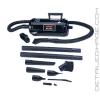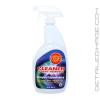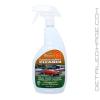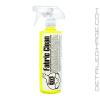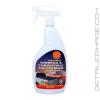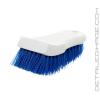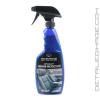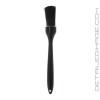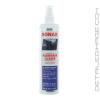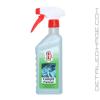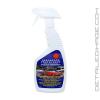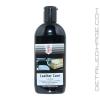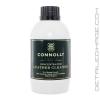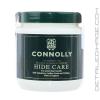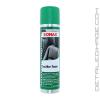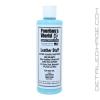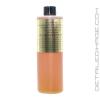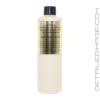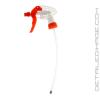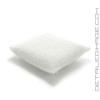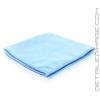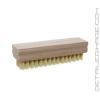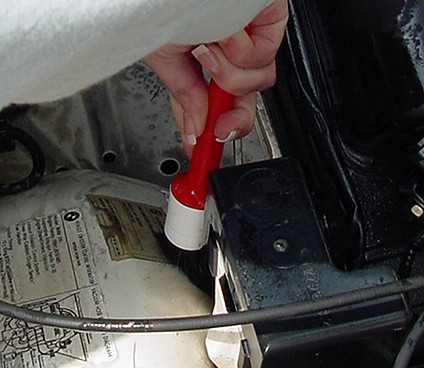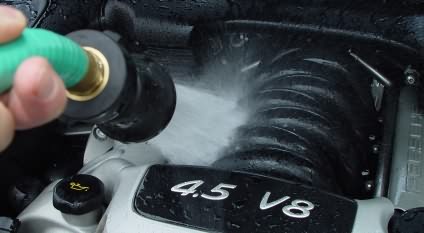Overview (Return to Top)
Caring for your interior is just as important as your exterior. You spend the most time inside your vehicle and your passengers often take notice of how clean, or not so clean, your interior is. It's important to protect your interior trim and leather from harmful UV rays that can potentially dry out and fade your interior. Keep your interior looking like new so you enjoy getting into your vehicle each and every time.
Carpet Care (Return to Top)
Caring for your fabrics is pretty simple, but unfortunately your carpets often see the most wear and tear since you are constantly bringing in dirt, debris and contamination from your shoes. First off remove your mats and be careful not to dump dirt and pebbles on the mat on to the carpets while removing them. A quick vacuum will help remove the obvious build ups if you haven't cleaned the carpets and mats recently, but don't get fussy you'll vacuum them again later in this process. A firm bristle brush is one of the most underrated tools in detailing and can be used next to loosen debris embedded in the carpets. Start brushing in a corner and work your way towards one mid point from all corners and sections. Once you've made a pile of debris, use a vacuum to remove it. Continue this same process for each fabric section and if you have fabric seats start with them and move on to the carpets and mats second.
After making an initial pass with the brush and vacuum, spot treat any stains with a fabric cleaner. Most cleaners should dwell on the fabric for 1 - 2 minutes, then scrub them again with a bristle brush in multiple different directions with medium pressure. The brushes bristles will get in between the carpet fibers and help bring contaminants to the surface. At the same time the bristles will break up stains and build ups on the surface. If stubborn stains persist spray them again with your cleaner and dip your brush in a tray of hot water before scrubbing them again with medium to firm pressure. When you are satisfied with the cleaning, use the vacuum if needed to remove any visible debris.
Once your carpet has completely dried, we recommend protecting your carpet. The 303 High Tech Fabric Guard is a great example of a fabric protectant. This will help prevent stains from forming in the future and will make cleaning your fabrics easier in the long run. Simply mist some product onto your carpet, mats and upholstery for a barrier of protection and you are done. The carpets will continue to look and feel completely natural but they will resist moisture and stains
Product Recommendations
Interior Trim (Return to Top)
Most interior trim (dashboard, console, doors, etc.) consists of a combination of vinyl, plastic, rubber and leather, which can be cared for with many of the same products, so there is no need to get a product for each material. Some products are strictly meant for cleaning, some are just for protection and others have a combination of both. In general products strictly meant for cleaning or protection are more effective than options that do both. If you need a serious cleaning then we highly recommend picking up a separate cleaner and protectant. Even if your vehicle is relatively clean we recommend at a minimum of 1 - 2 times per year you use just a cleaner on the interior for a more thorough cleaning. If your vehicle is well maintained than you may be able to use a cleaner and protectant in one bottle for maintenance cleanings.
For the vinyl, plastic, rubber, carpets and mats the 303 Cleaner and Spot Remover is a great product. It's a highly effective and very versatile formula that is very gentle. If you want some outstanding protection afterward the 303 Aerospace Protectant is a great choice for rubber, leather, vinyl, plastic, etc. It leaves a nice dark finish that is not glossy or greasy while providing outstanding UV protection. If you want a cleaner and protectant in one the Einszett Cockpit Premium is a great choice for rubber, plastic, vinyl, etc. It has some light cleaning agents but also leaves UV protection that looks stunning with zero oily residue left behind.
Product Recommendations
Leather Care How-To (Return to Top)
Beautiful leather is synonymous with clean leather and when the leather is looking its best it is a source of tremendous pride for automobile owners. Leather seats are one of the very first things we notice when entering a vehicle and dirty seats not only look bad but it can harm the long term health of the seats. Modern day leather can be comprised from a variety of natural and synthetic materials. Very few vehicles actually use just raw leather and many of them have a coating on them to help protect against wear and tear. All of these material are prone to drying out and breaking down over time so regular maintenance is essential.
Caring for virtually any type of seat involves the same basic steps which are cleaning, conditioning and protection. Inevitably over time dirt, dust, human oils, etc. work themselves deep in to the seats and can be quite challenging to remove. A good leather cleaner should be able to safely separate those contaminants and help bring them to the surface for removal. A quality leather conditioner can help keep the leather soft and flexible yet strong and durable. Cleaners and conditioners should not leave a glossy or oily finish behind. Lastly some protection can help prevent UV fading while preserving the color and finish for decades to come. With proper care the seats will look and feel outstanding year round while increasing the resale value.
In general products that clean and condition in one bottle are not as effective as a separate cleaner and conditioner. The trade off with using separate products is that it can cost more and they may take more time to apply. If interested in just a leather cleaner we recommend the Leatherique Prestine Clean or the Connolly Leather Cleaner. For conditioning the Leatherique Rejuvenator Oil and the Connolly Hide Care Leather Conditioner are two top notch choices. If you want to clean and condition in one bottle the SONAX Leather Foam and Einszett Lederpfledge Leather Care are some of the many great choices we have available. For protection afterward the 303 Aerospace Protectant is always a favorite for it's world renowned ability to block UV rays.
Product Recommendations
Leatherique Leather Care Application
Leatherique leather care products are some of the best in the industry. They have been the product of choice for the Bentley and Rolls Royce Owners Clubs. Leatherique can restore faded, hardened and neglected leather but it can also maintain brand new leather in great condition. They work extremely well on synthetic leathers "leatherette", coated leathers, vinyl seats and so much more! Both products use all natural active ingredients with no dyes to provide high quality leather care. The process leaves the seats feeling completely natural without a greasy or oily residue. The application is a two step process consisting of the Leatherique Rejuvenator Oil and Leatherique Prestine Clean. If you are working on seats that have not been well cared for recently you can expect to use more product, but well maintained or newer seats will need less product. The application of these products is unique in that the conditioner is applied first and the cleaner is applied second.
Start off using the Leatherique Rejuvenator Oil, which will penetrate the surface and condition your leather top to bottom. Apply the product liberally on your leather seats with either your bare hands or a soft applicator pad (i.e. terry cloth applicator). You can use a leather brush to help work the product deeper into the leather's pores if desired. Don't forget to do the head rests, back of the seats, sides, bolsters, arm rests and really work it in to creases and folds. If the product readily absorbs in to the seat you can apply more product until there is some visibly left on the surface. Each seat may need anywhere from .5 ounces to 2 ounces. When you are done back your vehicle into direct sun and if it's not sunny out you can use a hair dryer or turn on the heated seats. The heat will help open the pores of the leather and thin out the Rejuvenator Oil so it can penetrate in to every crevice of the leather. Ideally, you want to let the Rejuvenator Oil sit for a full day but a minimum of one to two hours still works very well. If none of these heat sources are are available to you don't worry the product will still work well on it's own, just let it sit the minimum of one to two hours.
After you've let the product sit on the leather for as long as possible, the surface may be a bit tacky to the touch, which is a good sign. At this time the Rejuvenator Oil has removed many of the embedded contaminants and forced them up to the surface. Now you will apply the Prestine Clean directly on top of the surface with a clean applicator pad (i.e. terry cloth applicator) or clean microfiber towel. Apply anywhere from .5 to 1.5 ounces per seat, working it in thoroughly with light pressure. Let the Prestine Clean sit on the leather for another 15 to 30 minutes. Take a slightly damp towel, using warm water, and remove both products from the leather with light pressure. Immediately follow up with a dry towel to remove any visible moisture. The seats should now look and feel incredible with no greasy or oily mess left behind at all. The leather will have a completely natural finish and be well nourished to help prevent future problems.
Product Recommendations
Professional Leatherique Application Guide
See how one of the top professional detailers in the US uses Leatherique to restore neglected leather.

Facts and Tips (Return to Top)
- A clean interior shows you take pride in your vehicle
- Cleaning and conditioning your leather on a regular basis will keep the leather looking great year round
- Protect your leather with a product that blocks UV rays
- Leather seats should never feel greasy or oily and avoid any product that adds a shine to the leather
- A scrub brush is arguably the most important tool to clean any fabric
- Microfiber towels are great for interior cleanings because they collect and trap dust particles
- As you exit the vehicle try to not twist on the seat, over time this can remove material from the surface
- Make sure you and your passengers don't have any sharp buttons, belts, etc. on your bottom side that can harm the leather
- Keep the interior clean by removing any wrappers, bottles and trash as soon as possible
- Adding an air freshener is an easy way to create a smile
Related Articles (Return to Top)
Here are a few articles related to Interior Care from our Ask-a-Pro Detailer Blog:
- Leatherique Leather Care How To
- Product Review: Meguiars Quik Interior Detailer
- Product Review: Metro Vac n Blo
- Simple Yet Effective Interior Cleaning
- Product Review: The Many Uses for Meguiars D101 All Purpose Cleaner (APC)
- How to Clean Scuffs from Door Sills and Door Panels
- 2006 Acura TL in Nighthawk Black Pearl Part 3
- Product Review and Guide: 303 Aerospace Protectant
- Dog Hair Removal Technique
- Product Review: The Many Uses for Meguiars D101 All Purpose Cleaner
